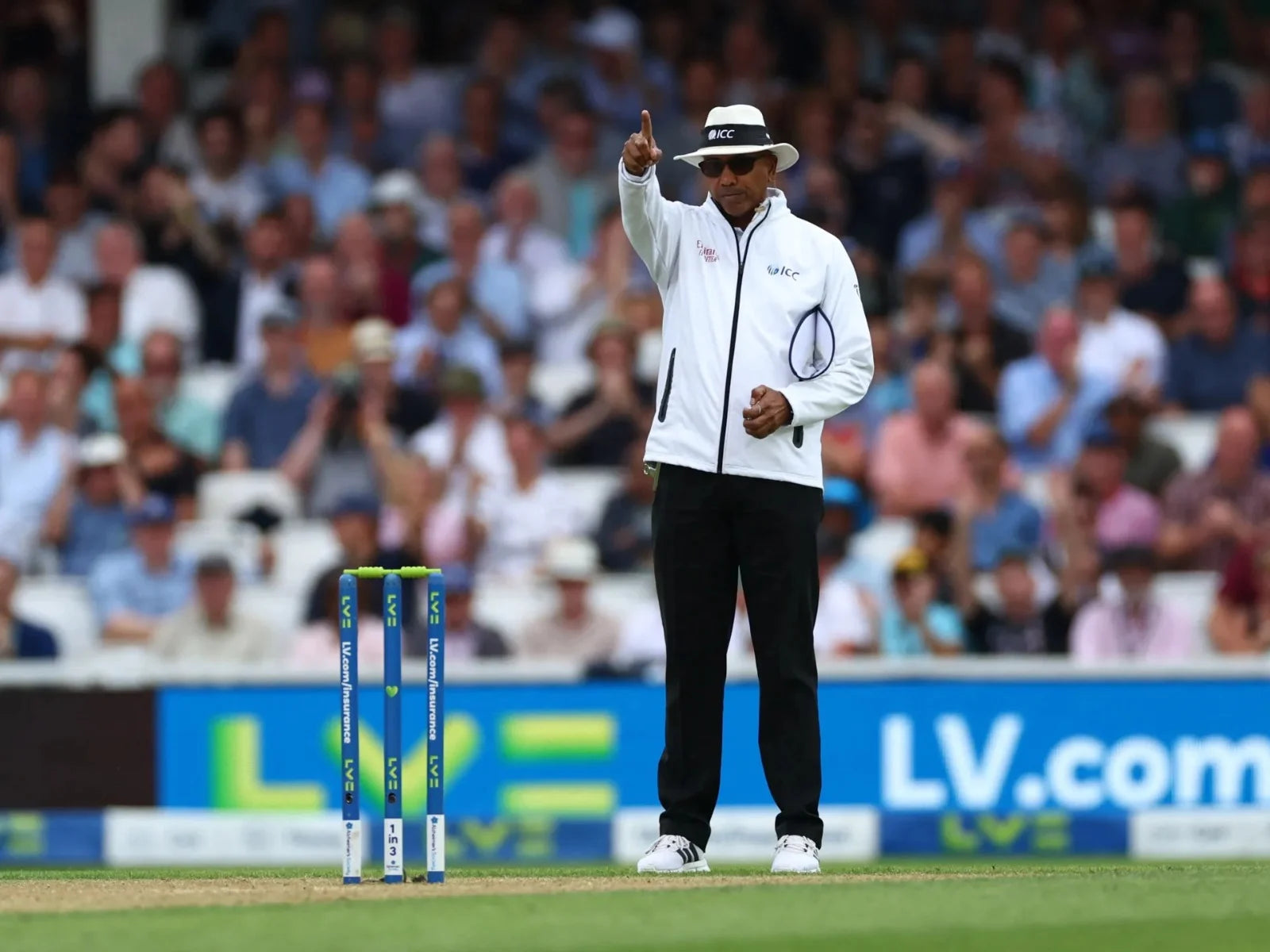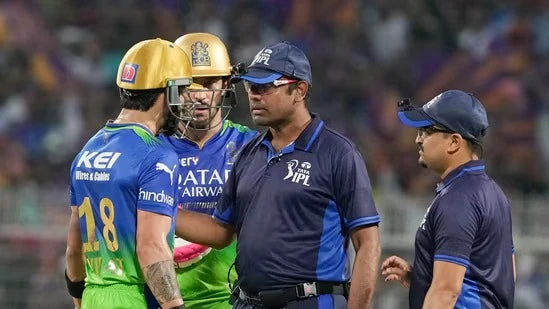How to Become a Cricket Umpire: Training and Certification
Being an umpire is a difficult profession. They are supposed to be extremely attentive and competent in their job. There might be serious consequences if they do not. We've all questioned the umpire's judgment at some time throughout the game. There have been instances where players disagreed with the umpire's decision. Consider yourself an umpire; how will you handle all of this turmoil, and how will you prove your verdict?

In this article by ZAP, lets focus on the life and career of an umpire. Everything from how to become an umpire to how to do it successfully throughout your career.
How to become a Cricket Umpire: Qualifications and Skills Required
It goes without saying that comprehending the rules and regulations of cricket is essential for an umpire. You must have a thorough comprehension of and enthusiasm for the game. You must be up to speed on any recent rule revisions. Your knowledge and grasp of the game must be so extensive that you can make rapid, correct judgments in the heat of battle.

Aside from understanding all of the regulations of the game, how you interact with the players and other authorities is critical. Communication clarity and effectiveness are crucial to your success. There may be several instances in which individuals or players disagree with your decisions in that circumstance. Having solid communication skills allows you to calm down in a situation and provide players with fair explanations.
When it comes to making decisions, time is of the essence. Is that an out or a no-ball? The judgements of the umpires can alter the course of the match in a single stroke. As a result, an umpire's keen and strong decision-making abilities, as well as confidence, are critical.
Finally, you must approach your duty as an umpire with objectivity and impartiality. At the end of the day, your integrity in the game should not be questioned. This implies you should not demonstrate partiality or let personal sentiments affect your actions. You must be fair, impartial, and committed to protecting the game's integrity.
If you have the requisite qualifications and talents to become a cricket umpire, you are in for a thrilling and rewarding experience. You can make a difference on the field and become one of the top umpires in the world with hard work, dedication, and a commitment to greatness.
Also Read: Powerplay Rules in Cricket
Training and certification required to be a Cricket Umpire:

We described how an umpire should be in the previous part. But how does one go about becoming an umpire? We cannot become umpires only by understanding all the rules and having excellent communication and decision-making abilities. So, what qualifies someone as a certified and genuine umpire? Let’s find out.
The journey begins with training and certifications provided by cricket governing bodies or umpire associations. One has to go through rigorous on-field evaluations with life performance marking.
To be more exact, there are two approaches to reaching the goal of becoming an umpire.
And, as we all know, everything taught must be tested, so following your training, the organizations establishes an exam to assess all of your talents and what you have learned. These examinations will assess your understanding of the rules as well as your ability to make judgements in a variety of game circumstances. Umpiring assignments and assessments may also be used to assess your on-field performance.
Whatever choice you make, you will obtain and receive the greatest understanding of the game only on the field. You'll study the game's laws and regulations, as well as the skills and methods required to make rapid, correct choices while doing it regularly in live matches.
Physical Fitness Required to be a Cricket Umpire:
Umpiring may be physically taxing, therefore it's critical to keep in shape and maintain decent physical condition. You cannot withstand the tension and physical challenges unless you have exceptional mental and physical qualities.
Umpiring may be physically very crucial, especially in the heat of a match, and the sun. Split-second decisions must be made. That is why it is critical to maintain physical fitness and stay in shape. This will provide you the energy to play your best game after game. Umpires may keep in shape in a variety of ways. Regular physical exercise, such as jogging, swimming, or participating in sports, is one solution. This will assist you in developing cardiovascular endurance, flexibility, and strength, all of which are necessary for umpiring.
Having great physical and mental capacity greatly depends upon the food we take. It's critical to eat a nutritious diet and stay hydrated. Eating a healthy diet and being hydrated can help you retain energy and attention, both of which are essential for making rapid and accurate decisions. Consider incorporating stretching and flexibility exercises into your routine. This will help you stay limber and reduce the risk of injury.
Also Read: Fitness and Exercises for Cricket
The Role of DRS in Umpiring:

The Decision Review System (DRS) has revolutionized modern cricket umpiring by significantly enhancing the level of accuracy and fairness in decision-making during matches. Introduced to reduce umpiring errors and provide more precise outcomes, DRS has become an integral part of the game. The system allows players to challenge on-field decisions by referring them to the third umpire for review, thereby ensuring that contentious decisions are thoroughly examined. Utilizing advanced technology such as ball-tracking and edge-detection systems, DRS assists umpires in making more informed and accurate decisions.
One of the key benefits of DRS is its ability to provide additional visual aids and angles, allowing umpires to eliminate any doubts they may have regarding their original decisions. For instance, with the help of ball-tracking technology, umpires can accurately determine the trajectory of the ball and whether it would have hit the stumps, thereby reducing the margin of error in LBW decisions. Similarly, edge-detection systems help in determining whether the ball has made contact with the bat or batting pads, helping umpires make more accurate decisions regarding catches and dismissals.
Despite occasional controversies and debates surrounding its implementation, DRS has undeniably raised the overall standard of umpiring in cricket, ensuring a fairer and more transparent adjudication process. By providing umpires with access to advanced technology and additional visual aids, DRS has significantly reduced the number of errors and controversial decisions, thereby enhancing the integrity and credibility of the game.
FAQ:
What is the salary of a cricket umpire?
The salaries of cricket umpires vary depending on their experience and the level of competition they officiate in. Here's a breakdown: International Cricket Umpires: They earn the highest, with top umpires making between $80,000 to $200,000 annually. This includes a base salary, match fees, and allowances. Domestic Cricket Umpires: Their salaries are lower, ranging from $10,000 to $50,000 per year. This can vary depending on the country's cricket board and the tournament's prominence.
How many umpires are there on the ground?
During a match, there are two umpires on the cricket field. One stands at each end of the pitch.
What is umpire's call in cricket?
"Umpire's Call" is a decision in cricket where the on-field umpire is unable to definitively determine if a batsman is out through certain dismissal methods like LBW (Leg Before Wicket). Even after using technology like replays, if the call remains ambiguous, the umpire's initial call on the field stands. This can be a controversial aspect of the game.
Now that you have read about how to become a cricket umpire and the training and qualification needed for it, here are some more articles we recommend you to read:
Cricket Batting Techniques | Cricket Fast Bowling Techniques | Cricket Fielding Techniques




Leave a comment